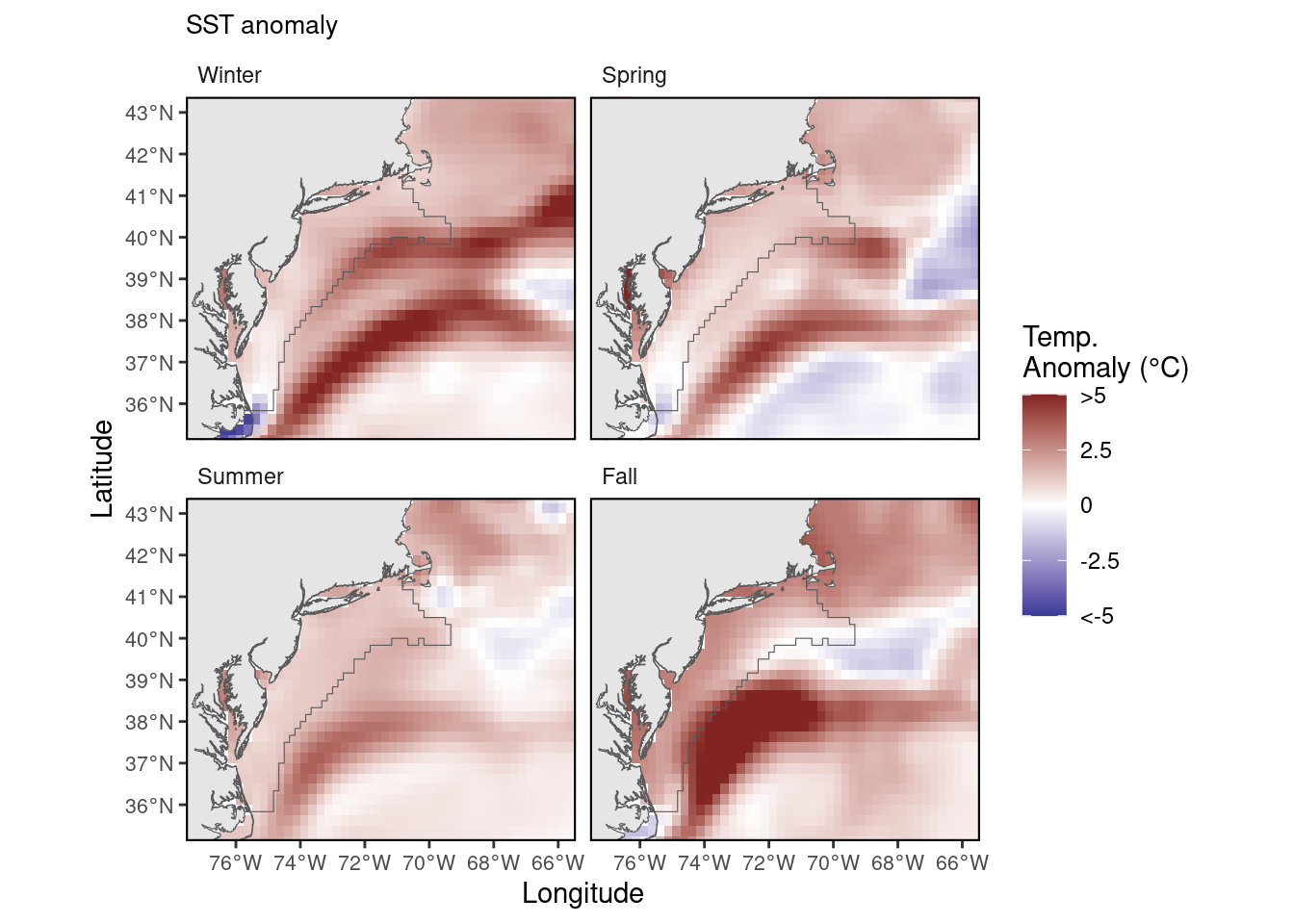37 Seasonal OISST Anomaly Map
Description: Mapped seasonal sea surface temperature anomaly
Indicator family:
Contributor(s): Brandon Beltz, Abigail Tyrell
Affiliations: NEFSC
37.1 Introduction to Indicator
Sea surface temperature can be used as a proxy for overall thermal conditions in the system. Data for sea surface anomalies were derived from the National Oceanographic and Atmospheric Administration optimum interpolation sea surface temperature high resolution data set (NOAA OISST V2). Mean seasonal-annual SST was calculated for each EPU. To These data extend from 1981 to present. Anomalies are calculate by subtracting the long-term mean temperature is calculated from 1982-2010 for each season, from the seasonal-annual mean SST. Gridded anomalies are presented on a map for each year.
37.2 Key Results and Visualizations
Despite record setting ocean temperatures in 2023, the Northeast US shelf had both warm and cool sea surface temperature anomalies in each season.

37.3 Indicator statistics
Spatial scale: EPUs on full shelf map
Temporal scale: Seasonal: Winter (January - March), Spring (April - June), Summer (July - September), Fall (October - December)
Synthesis Theme:
37.4 Implications
Sea surface temperature is an indicator of thermal habitat for pelagic species. Long-term warming trends suggest wide-spread environmental change in the system. Warming trends can have potential impacts on species spatial distributions, the seasonal timing of species life history events, and the overall productivity of the system. Maps show how temperature change has been distributed in each EPU each year.
37.5 Get the data
Point of contact: Brandon.Beltz@noaa.gov
ecodata name: ecodata::seasonal_sst_anomaly_gridded
Variable definitions
Ex: 1) Name: piscivore_biomass; Definition: Biomass of piscivores; Units: kg tow^-1. 2) Name: forage_biomass; Definition: Biomass of forage fish; Units: kg tow^-1.
Indicator Category:
37.7 Accessibility and Constraints
No response
tech-doc link https://noaa-edab.github.io/tech-doc/seasonal_sst_anomaly_gridded.html